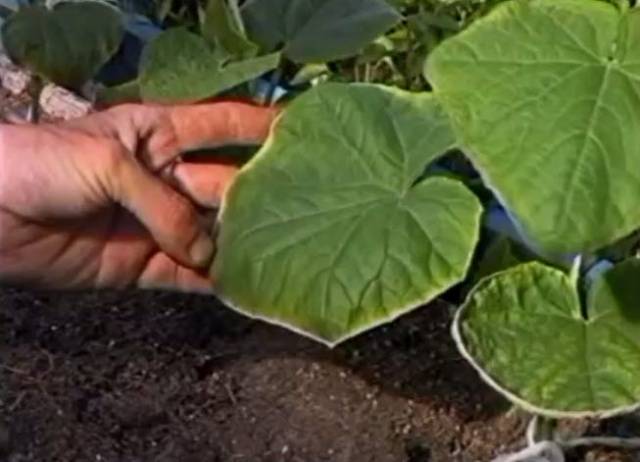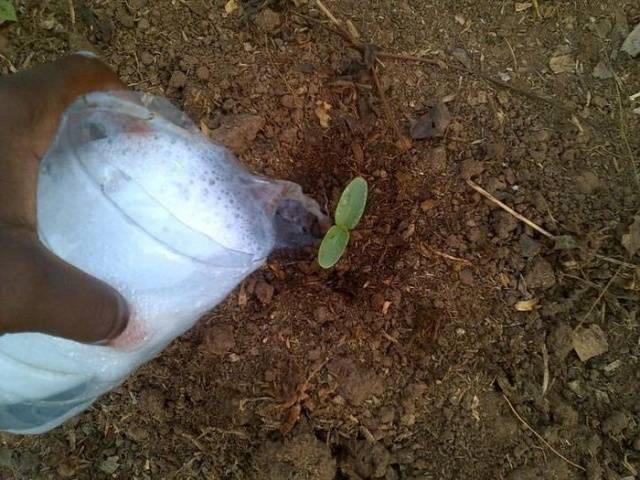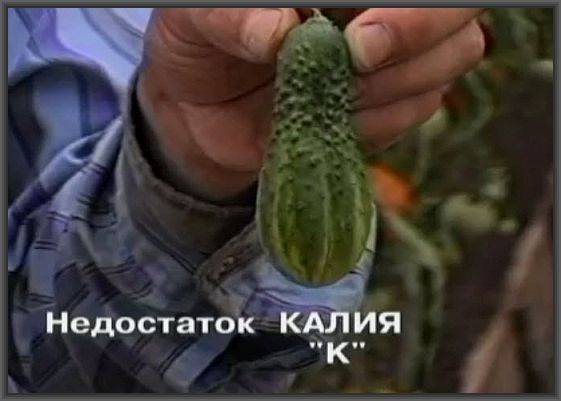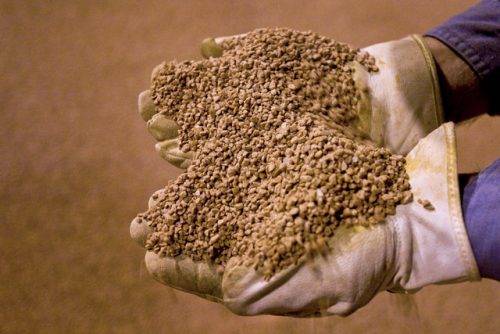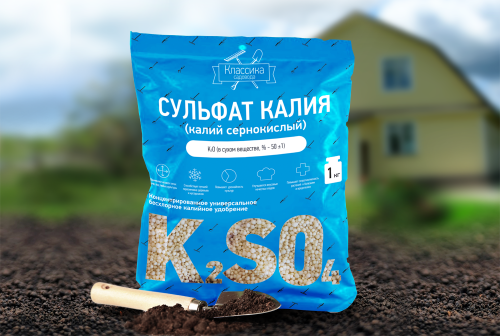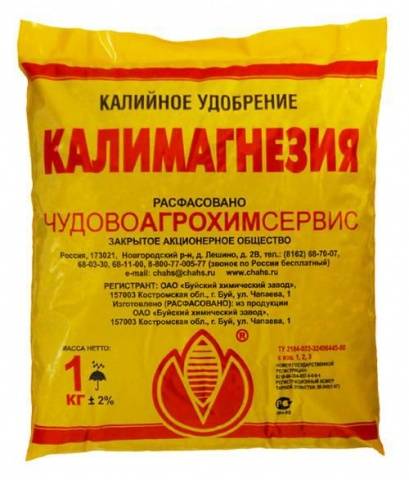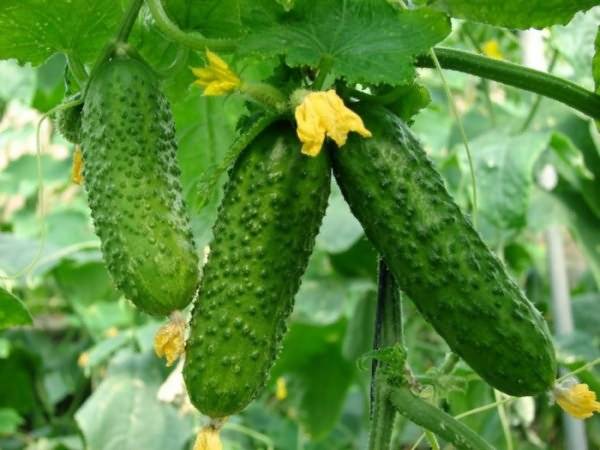Content
Cucumbers are grown in almost every personal and suburban area. Gardeners who have been cultivating for more than one year are well aware that a vegetable needs fertile soil and timely feeding. The root system of the cucumber is designed in such a way that it is able to receive nutrition from the surface of the soil. The fact is that the fibrous root does not grow in depth, but in width.
Cucumber nutrition during the growing season should be balanced. The plant needs many micronutrients, but potash fertilizers for cucumbers are the most important. Potassium ions are present in the cellular juice of vegetables. Their shortage negatively affects the yield of the crop and the quality of the fruits. A cucumber whip looks like in the photo if the plant does not receive the required amount of potassium.
Microelements important for cucumbers
Cucumbers, unlike many cultivated plants, are extremely demanding on nutrition. To get a rich harvest in the beds in the greenhouse or outdoors, you need to take care of the balance of trace elements. They must be kept in the soil when planted and supplemented to nourish the plants during the growing season.
What trace elements do cucumbers need:
- Nitrogen is involved in the growth of green mass, the need for it is great at the beginning of growth.
- The need for phosphorus is not so great, but in its absence, cucumbers "freeze", the growth of the plants and fruits themselves slows down.
- Potassium is needed for cucumbers more than other trace elements. After all, he is responsible for the movement of juices, for growth and fruiting.
In addition, plants require zinc, manganese, boron and other trace elements, which plants should receive with balanced feeding.
Mineral or organic fertilizers are applied at different times with strict adherence to dosages.
Symptoms of a micronutrient deficiency
Potassium is one of the most important micronutrients required for greenhouse or open field cucumbers. Experienced gardeners determine the lack of potassium by the state of the plant. Beginners do not always succeed due to lack of knowledge. Therefore, we will dwell on this issue in more detail.
The main symptoms are:
- A large number of whips, leaves appear on the liana, and the ovaries are practically absent.
- The leaves turn unnaturally green, the edges turn yellowish-gray, the edges dry out. This process spreads to the middle of the leaf, it dies off.
- Potassium deficiency affects not only the presence of barren flowers, but also a change in the shape of the fruit. They most often resemble a pear. In addition, these cucumbers lack sugar, so they taste bitter.
What is potash fertilizer
Potash fertilizer is a variety mineral dressings to improve the quality of crops grown in the garden and vegetable garden. The application allows to improve the immunity of plants, which, in turn, has a positive effect on resistance to many diseases. The presence of potassium in the soil is a protective barrier against many insects. Moreover, cucumbers are less sick with fluctuations in temperature and humidity.
Types of potash fertilizers
There are two types of potassium-based fertilizers: chloride and sulfate. For feeding cucumbers, it is better to use chlorine-free fertilizer.In addition, potash fertilizers come in the form of crude salts (carnallite, sylvinite, polyhalite, kainite, nepheline) or concentrates (crystals, granules).
Varieties of potash fertilizers for feeding cucumbers:
- potassium sulfate (Potassium sulfate).
- Potassium salt.
- Potash saltpeter
- Potassium carbonate.
- Kalimagnesia.
- Wood ash.
Potassium sulphate
From this list, potassium sulfate is most often used for feeding cucumbers, half of this trace element. Moreover, it is chlorine free. It is a white or grayish crystalline powder that dissolves completely in water. It can be applied under cucumbers, as root dressing, in spring or autumn. If there is insufficient light in the greenhouse or in adverse weather conditions, this potash fertilizer can be used for foliar feeding to improve photosynthesis.
Kalimag
The gardeners immediately appreciated the appearance of Kalimagnesia on the market. This potash fertilizer can be powdery or granular. It includes:
- magnesium - 10-17%;
- potassium - 25-30%;
- sulfur - 17%.
Magnesium and potassium are sulfates, easily soluble in water, well absorbed by cucumbers.
The use of a drug such as Kalimag makes it possible to obtain products with excellent taste. This fertilizer can be used to feed not only cucumbers, but also potatoes, beets, zucchini, pumpkins, fruit trees and shrubs.
How to properly apply the new series of potash fertilizer for feeding cucumbers? Kalimagnesia, as a rule, is used in the fall or spring when preparing the soil. In the fall, a larger amount of the nutrient potassium preparation is required - from 135 to 200 grams. In the spring, 110 grams per square meter is enough. After watering, the soil is carefully dug up.
During the growing season, cucumbers can be fed with Kalimag at the root, especially during the period of the emergence of embryos and the flowering of the plant. To obtain a nutrient solution for a ten-liter bucket, 15-25 grams are enough.
Kalimagnesia can also be used dry. Pour the powder under the plants and sprinkle with warm water. Per square up to 20 grams.
How to apply potash fertilizers
It takes several days from a flower to a full-fledged fruit. While cucumbers ripen in some internodes, ovaries appear in others. The process goes on continuously. It is clear that you cannot do without top dressing. Especially important for stable fruiting potassium.
Top dressing of cucumbers with potash fertilizers must be carried out in a timely manner. Disadvantage trace element reduces the yield of your beds. Experienced gardeners never feed all plantings at the same time. Check the need for potassium in cucumbers for 1-2 plants. If after three days they show an improvement in growth, ovaries have formed, then you can start feeding cucumbers throughout the greenhouse.
The dosage of potash fertilizers for cucumbers depends on the degree of soil preparation in the autumn or spring. If, for some reason, the soil has not received the required amount of potassium, then during the period of plant growth, top dressing should become mandatory.
Usually, cucumbers fertilize potash fertilizers 3-5 times at regular intervals. But in case of potassium deficiency, it is necessary feed plants out of schedule.
Fertilizer preparation rules
Each gardener, taking into account the condition of the soil, applies store-bought fertilizers or prepares them independently. Consider the most common options for potash fertilizers, which are used for feeding cucumbers during different periods of the growing season.
- When the first embryos appear in internodes, the need for complex fertilizers increases.A ten-liter bucket will require a solution of mullein (chicken droppings) - 200 grams, a teaspoon of superphosphate and potassium sulfate. Watering is carried out at the root of the watering can.
- The second time, fertilization will be required for cucumbers when mass fruiting begins. Plants consume nutrients from the soil very quickly. If you do not feed them in time, then the ovaries can dry out and crumble. For root feeding, use mullein - 150 grams, nitrophoska - 1 large spoon per 10 liters of water. Instead of mullein, you can use herbal infusions of plants such as nettle, wood lice, and runny. The infusion is prepared for a week. For each square. m pour 3 liters of solution. The use of such a solution will enrich the planting with nutrients, including potassium.
- If complex fertilizers are not available, you can prepare such a composition yourself (recipe for watering 1 sq. M). For 10 liters of water, you will need potassium sulfate and urea, 10 grams each, potassium magnesium - 20 grams. You can add 30 grams of ash. Cucumbers are fed with such fertilizer at the first signs of potassium deficiency.
- Potash fertilizer for feeding cucumbers can be prepared at home from wood ash alone. This substance is useful in that it contains not only potassium, but also many other trace elements necessary for growth and fruiting. When preparing an aqueous solution, add one and a half glasses of ash to a ten-liter bucket. The resulting solution is used for root and foliar dressing of cucumbers.
The use of ash and dry is allowed. It is poured onto moistened soil over the entire surface of the garden. Then lightly water the cucumbers.
If the cucumbers are grown in the open field, the need for fertilizers is higher due to the leaching of trace elements by rains.
About potassium and its role:
Needed or not ...
Gardeners always face the question of what fertilizers to use for feeding cucumbers. It should be noted that a high yield of green fruits can be obtained with an integrated approach. Vegetable growers with extensive experience, without our recommendations, select a feeding scheme. Beginners will have to adapt. The main thing to remember is that plants always give a sos signal when they are missing something. You need to learn to “hear” the cucumbers and come to the rescue on time.
